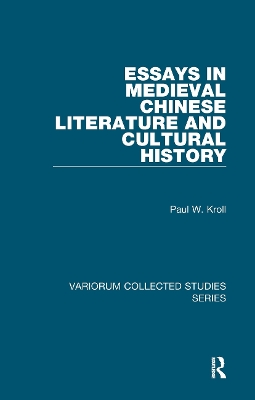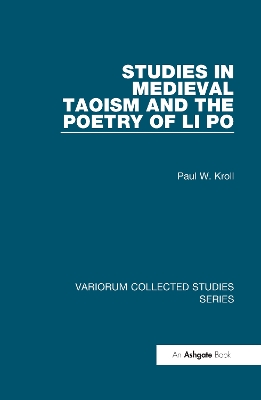Variorum Collected Studies
2 total works
This is one of a pair of volumes by Paul Kroll (the companion volume deals with medieval Taoism and the poetry of Li Po). Collecting eleven essays by this leading scholar of Chinese poetry, the volume presents a selection of studies devoted to the medieval period, centering especially on the T'ang dynasty. It opens with the author's famous articles on the dancing horses of T'ang, on the emperor HsA1/4an Tsung's abandonment of his capital and forced execution of his prized consort, and on poems relating to the holy mountain T'ai Shan (with special attention to Li Po). Following these are detailed examinations of landscape and mountain imagery in the poetry of the "High T'ang" period in the mid-8th century, and of an extraordinary attempt made in the mid-9th-century to recall in verse and anecdote the great days of the High T'ang. The second section of the book includes two articles on birds (notably the kingfisher and the egret) in medieval poetry, and four of Kroll's influential studies focusing on the verse-form known as the fu or "rhapsody," especially drawing from the 3rd-century poet Ts'ao Chih and the 7th-century poet Lu Chao-lin.
The emergence of Taoism during the 3rd through 8th centuries as China's indigenous higher religion affected all areas of culture. This volume, one of a pair by Paul Kroll (its companion dealing with other aspects of medieval Chinese literature and cultural history), brings together twelve studies by this leading scholar of medieval China which illuminate selected aspects of Taoism in texts dating to this period and also considers its influence in the works of the great T'ang-dynasty poet, Li Po. Included here are essays on the proto-Taoist poem "Far Roaming" from the 2nd century B.C., on gods, goddesses, paradises, and poetry of the momentous Shang-ch'ing revelations of the 4th century A.D., and on Taoist figures from the T'ang dynasty. The author's writings on Li Po are well known, and several articles included in the second half of the book examine Li Po's personal connection with religious Taoism and his use of its specialized imagery. The volume concludes with a study focusing on the influence of earlier writings on Li Po's famous poem "The Road to Shu is Hard," and with an extensive monograph on his use of Buddhism in his poems and inscriptions.

